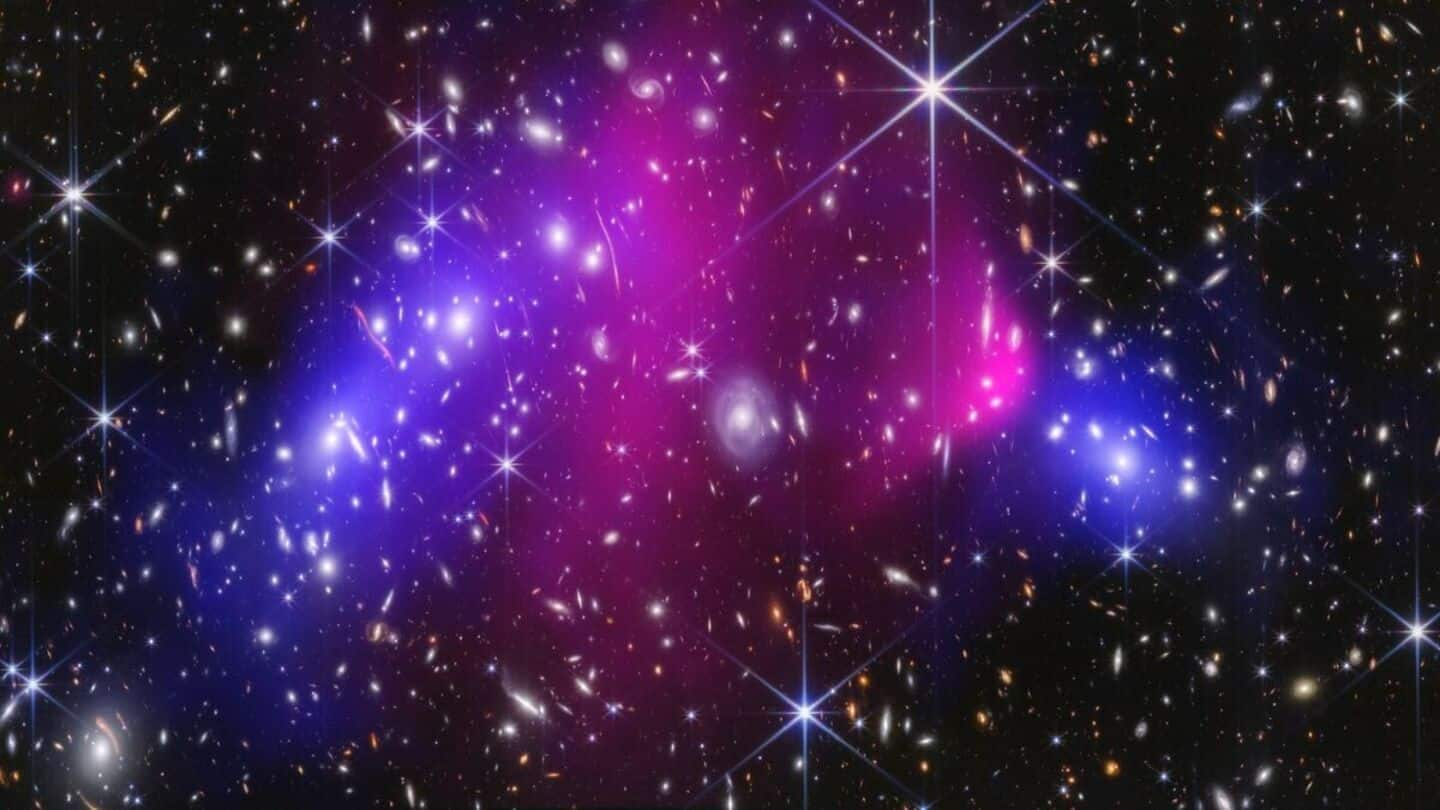
Watch: James Webb telescope snaps collision between two galaxy clusters
What's the story
NASA's James Webb Space Telescope has captured an image of the Bullet Cluster, a massive collision between two galaxy clusters. The image, taken in partnership with NASA's Chandra X-ray Observatory, not only shows the location and mass of dark matter, but also shows the way toward one day finding out what it is made of. The hot gas within Bullet Cluster is shown in false-color pink by Chandra, while JWST mapped the inferred location of dark matter in blue.
Research hotspot
What is the Bullet Cluster?
Located 3.9 billion light-years away, the Bullet Cluster has been a key player in dark matter studies. In 2006, Hubble and Chandra imaged the cluster and detected its dark matter by observing how light from distant galaxies was gravitationally lensed by the mass of dark matter. Galaxy cluster collisions serve as perfect laboratories for testing theories about dark matter due to their massive scale and potential particle interactions.
Enhanced mapping
How the 2 galaxy clusters passed through each other
A team led by Sangjun Cha from Yonsei University and James Jee from both Yonsei and UC Davis used JWST to get a detailed look at the Bullet Cluster. The new picture shows that as the two individual galaxy clusters in the Bullet Cluster collided, their galaxies and dark matter halos passed right through each other. This suggests that dark matter particles might not interact much with each other, unlike hot gas clouds which collide head-on.
Unsolved puzzles
'Hammerhead' shape in larger sub-cluster
The refined map of dark matter shows an elongated "hammerhead" shape in the larger sub-cluster, which Jee says "cannot be easily explained by a single head-on collision." This suggests that the elongated, clumpy mass of dark matter could have formed when this particular sub-cluster collided and merged with another galactic cluster billions of years ago. Despite these discoveries, the issue of high collision velocities between the two sub-clusters remains unresolved.